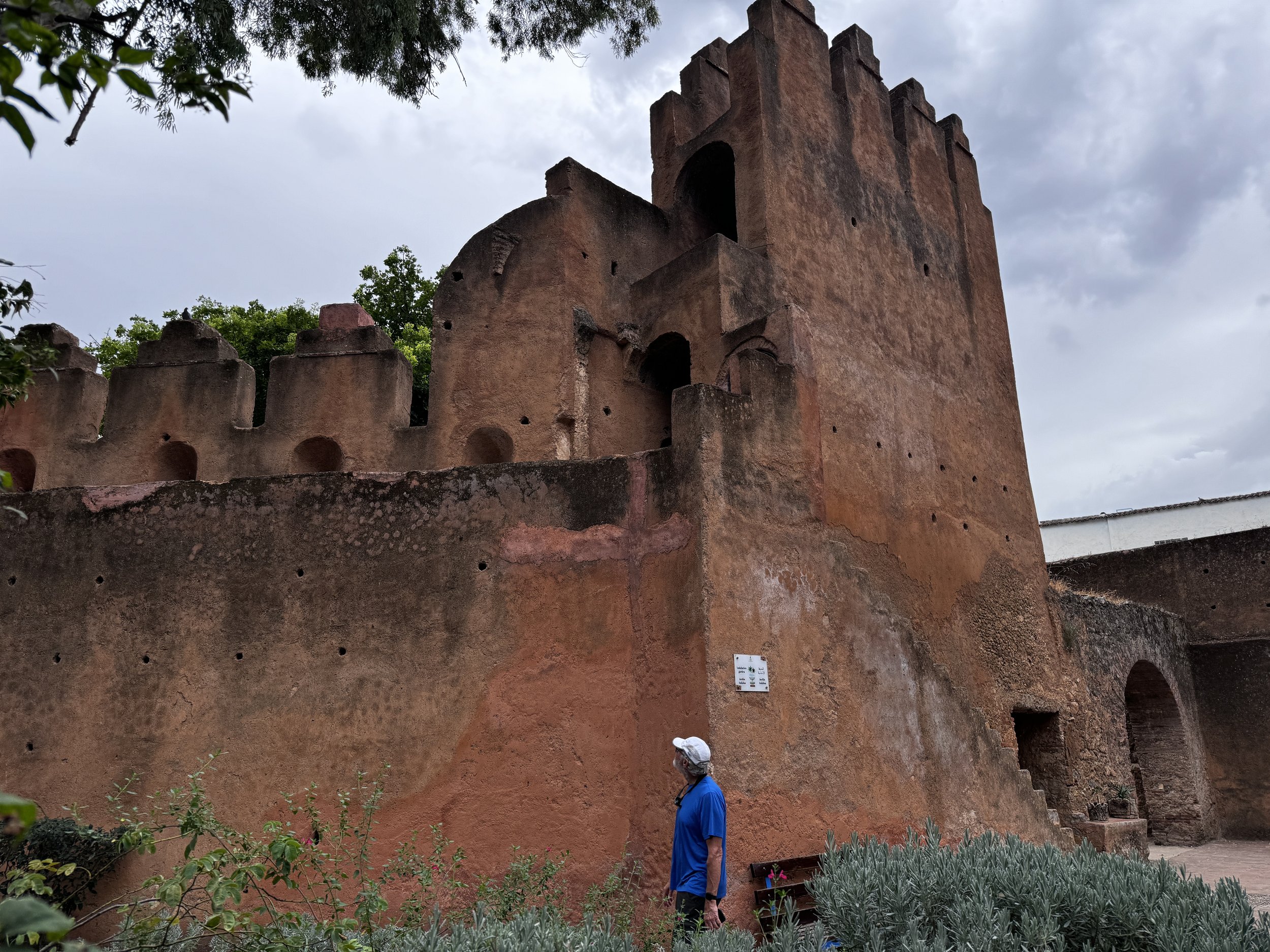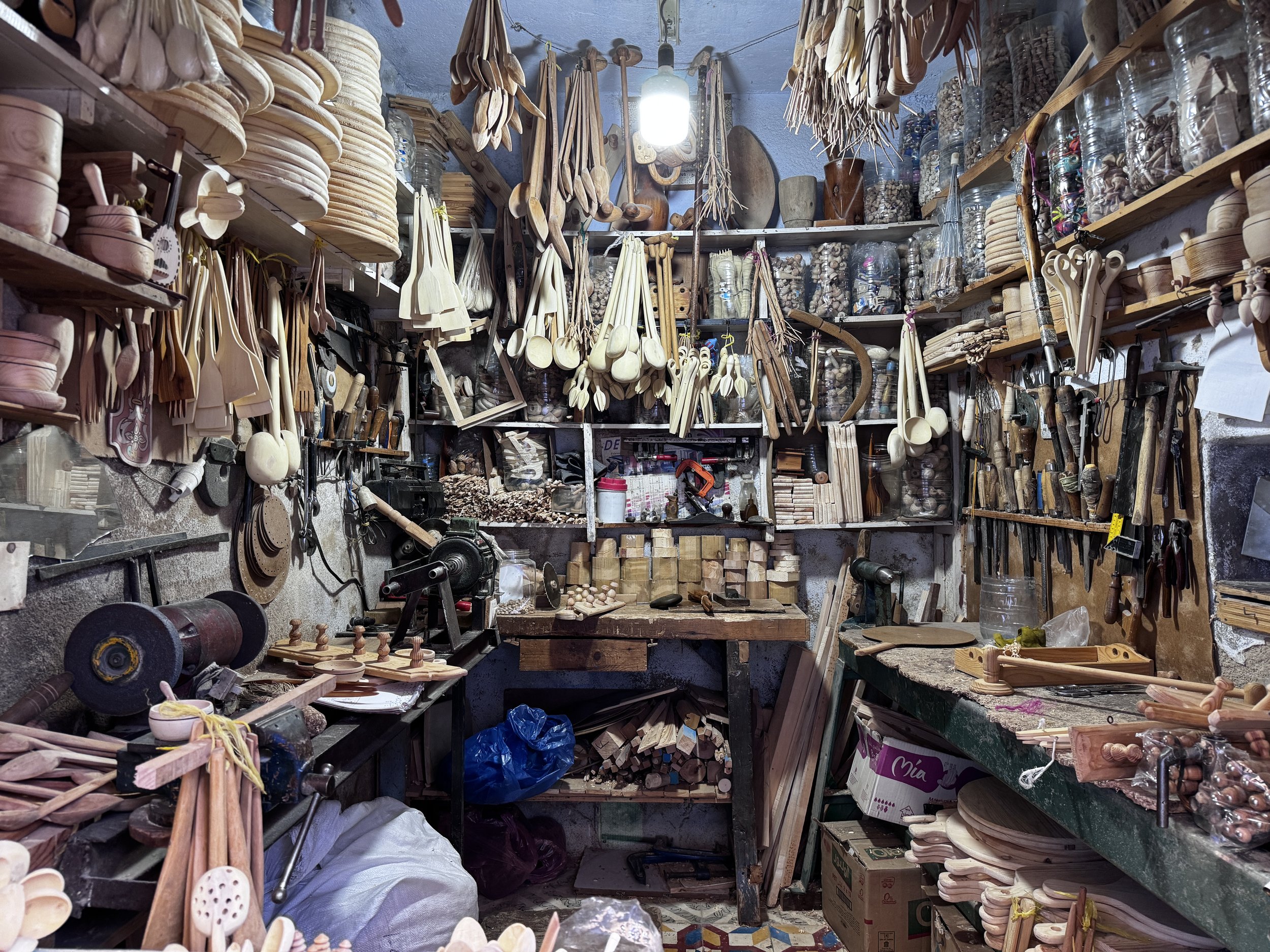Touring Morocco
Part One
We had to leave the beautifully quiet marina in Gibraltar which did not have space for us. We were hoping to stay until some parts we’d ordered had arrived. Instead, we returned to Spain - a whole 3 miles away! Since we were killing time we decided to spend the week in Morocco.
Formalities to enter the country is complicated and we don’t speak Arabic, or French with any confidence. Furthermore it’s extremely cost prohibitive to hire an agent, so instead of cruising over there, we decided to leave Meraki at the marina and take a ferry across the Strait of Gibraltar. Again, because of our lack of language skills and our insecurity renting a car and driving ourselves around Morocco, I looked into the cost of hiring an english speaking driver. What I discovered was an entire travel industry I knew nothing about.
Customized travel is not at all what I thought it was. I assumed it would be way out of our price range and designed for people who travel luxury style. What I found was the ability to totally design my own trip based on how we like to travel. Everything from building your own itinerary, to what you want to do, how you want to get there, how much time you want with/without a guide, large/small group or private tours, flexibility to change course, the list goes on and on. You work with an online booking agent who asks all the right questions about what your dream trip would be, and then starts giving you suggestions. Naturally I was super skeptical and didn’t buy in right away, but the process went smoothly, we reworked parts of the itinerary several times until we got what felt right, eliminated the last day to lessen the transit time home, and ended up with a one week trip that exceeded our expectations in both price and professionalism. If you want to travel but don’t have the time or wherewithal to do all the planning that goes into it - especially abroad, check it out! (sorry if I sound like an infomercial)
After a one hour bus ride from La Linea to Tarifa we boarded the ferry from southern Spain to Tangier, Morocco. It happened to be a somewhat rough day in the Strait - definitely not a day we would have considered making the crossing in Meraki. The plan was to spend the first afternoon/evening on our own before meeting our driver/guide the next morning. On our way to the hotel we met a man who offered to show us around Tangier. We agreed to a price and met him an hour and a half later. He walked us through the small Medina (the city’s old town and historic center) and pointed out the sights. Naturally I asked him to take us to the markets.















We learned that Morocco is a rich mix of cultures. Religious diversity has always been a defining characteristic of Moroccan society, which contributes to its cultural richness. Morocco has long avoided conflicts in the name of religion, and has maintained a remarkable history of peace, mutual respect and tolerance. We walked past a Mosque two doors down from a Catholic Church and across the street from a Synagogue. How refreshing to find such deep-rooted religious tolerance and inclusivity.











Leaving Tangier the next day we drove through farmland and up into the Rif Mountains, a 180 mile (290 km) long range that hugs the Mediterranean Sea to the north and save for just a couple of coastal valleys is unsuitable for agriculture. We arrived in the small village of Chefchaouen, otherwise known as the Blue City, and checked into our Riad - a traditional Moroccan house or guesthouse with an interior garden or courtyard. What a treat. Gorgeous pottery, woodwork and furnishings throughout.










Chefchaouen was built in the early 1400s. After the fall of Grenada to the Catholics in 1492, both Muslims and Jews were kicked out of Spain and headed to Morocco where they found refuge. They were welcomed in by the locals and managed to prosper. This is possibly the reason why the old part of the city resembles an Andalusian village. Interestingly, most of the inhabitants of Chefchaouen can still also speak Spanish.
The town wasn’t painted blue until the early 1900s. There seems to be some debate about how this came about. The most likely reason is that Jews used the color blue to distinguish themselves from the green that represents Muslim culture. To the Jews blue is also a way to remember God which we are reminded of by both the sky and the sea. Whatever the reason, the fact remains that Chefchaouen is a beautiful village and the starting point of plenty of trails that draw you into the surrounding mountains.
We went for a stroll through the town and the first thing we saw was the Kasbah, meaning fortress, which is located in the center of the old town. It surroundeds lush gardens that provide a total contrast to the noisy bustle of the busy main square just outside.





The main square is packed with restaurants and cafes, artists, musicians and tourists. But it’s possible to wander up into the side streets where you find quiet passages and small shops of ceramics, leather, woodworking, clothes, spices and much more.
























Early one morning, before the heat of the day, we hiked up out of the village to catch the views from above.




Morocco is and has always been, open for dialogue between the peoples of the Mediterranean and the sub-Saharan region. They have a long history of positive interactions with the Phoenicians, the Romans and many others and have made beneficial exchanges with many of them, as evidenced by the remains of entire cities, one of which is Volublis.
Today a Unesco World Heritage site, Volublis, is an expansive Roman ruin covering 42 hectares - over 100 acres! It was occupied for nearly a thousand years. Over the centuries the site produced a vast amount of artistic material, including mosaics, marble and bronze statues, and hundreds of inscriptions.











We continued on to the city of Meknes and visited the Mausoleum of Moulay Ismail. Ismail’s reign as sultan, from 1672-1727, was longer than any other ruler in Moroccan history. I’m not sure if he should be remembered more for his beautiful creations or for his cruel tyranny, but everyone agrees that he was one of the most important rulers in Moroccan history.
The ornate tomb at the mausoleum is open to non-Muslims. We admired the architecture, the metalwork, mosaics, carved plaster and woodwork, fountains and colors.
















Our first few days in Morocco were confusing, colorful and eye-opening. It is the only country in the Arab world that is proud of its Jewish legacy. The people are accommodating, open, friendly, and so very tolerant. They are as proud of their composite identity; Amazigh (Berber), Arab, Islamic, Jewish, African, Andalusian and Mediterranean, as they are their time-old acceptance of others.
My understanding is that they intend to preserve this diversity and national identity - for this reason I have the utmost respect for the country and its people.
Note: photo captions will not appear if viewing on a cell phone.


